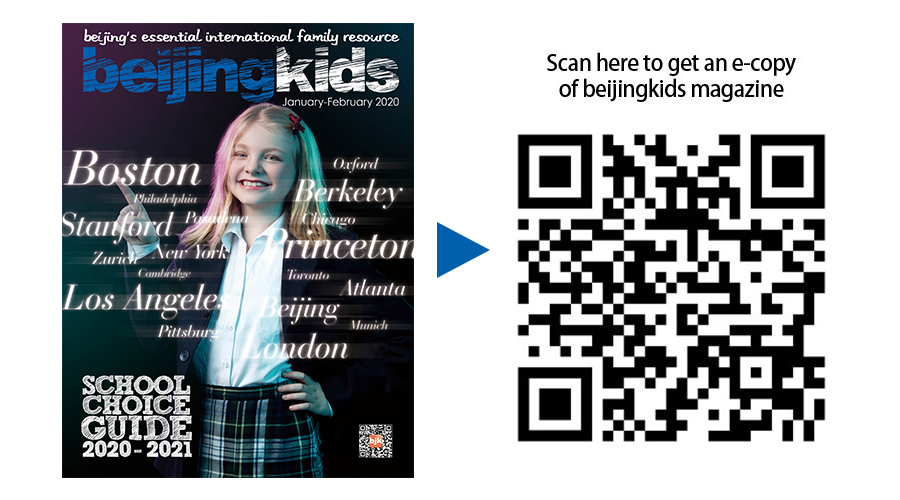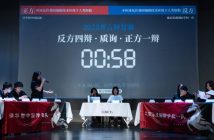Every year we have the distinct privilege of compiling a School Choice Guide (SCG) for our readers. This special issue of our magazine is not only a comprehensive look at the state of international education in Beijing, it also acts as a compendium to our annual Jing International School Expo (JISE), so that parents and students are equipped to make the most out of their visits with principals and staff at the event, and ultimately find the best school for their family.
Due to COVID-19, we were unfortunately forced to delay JISE, however, our 2020-2021 School Choice Guide is available and jam-packed with information! Now is the perfect time to familiarize yourself with everything from the various curricula followed at different institutions, to the ways in which schools ensure that all their students receive an equitable education, no matter their learning needs.
For now, check out our feature on scholarships and learn how your student can get a leg up in the competition. Then pop over to our School Profiles Index and find out which Beijing international schools offer these valuable awards.
The days of a teacher standing in the front of a classroom throwing words at students and hoping something sticks is long gone. Education has undergone an incredible transformation of unparalleled diversity and complexity. With so many schools teaching a multitude of curriculum types, it can be easy to get lost in what each school has to offer in the terms of teaching approach and student learning. To get a better understanding of the different curricula out there, we interviewed seven schools that have all adopted a specific curriculum to teach their student body. Please keep in mind that this guide is not meant to suggest which curriculum is the best, but to simply give a better understanding of how they differ from one another and how some of Beijing’s schools implement them.

Hybrid Curriculum
A hybrid curriculum is just as its name suggests. Two curricula are selected by the school, one being an international curriculum such as IB or Common Core using English as its main language for instruction, and the other being the national curriculum of the country the school is in. Therefore, schools have much greater flexibility in the courses they can provide for students as well as making the transition into enrolling in the school easier for students who are coming in from public schools. Core subjects from the Chinese National Curriculum are taught, but the teaching approach may be more Western as hands-on activities such as presentations, debates, and team-oriented research are incorporated.
How Hybrid Curriculum works at BSB Shunyi:
Students at the British School of Beijing, Shunyi (BSB Shunyi) follow an enhanced English National Curriculum completing the IGCSE examinations at age 16. Then senior students aged 17 and 18 study for the IB Diploma. Their German Primary Programme for native Germans includes the Thuringia Curriculum core subjects in German and integrates into the English Curriculum for the other subjects with their peers.
International Baccalaureate
IB programs are designed to have students think critically and challenge one another as they are encouraged to become independent global citizens. There are four main programs offered to students: The IB Diploma Program and the IB Career-related Program (ages 16-19), the Middle Years Program (ages 11-16), and the Primary Years Program (ages 3-12). IB schools have been authorized and accredited to teach these programs by the International Baccalaureate.
How International Baccalaureate works at BCIS:
Beijing City International School (BCIS) employs a play-based approach to early childhood learning, an inquiry-based approach in their Elementary School, and an impact-based approach to the Secondary School learning. The three approaches to the IB programs enable students of all ages to guide their learning and apply it in meaningful ways. For their oldest students, the Secondary School Learning Model develops the four key impacts of critical thinking, creative thinking, purposeful doing, and connected learning to best equip these students to meet personal goals in their future education and lives beyond.
Bilingual Approach
While not officially a curriculum, it is still an approach to learning that has been adopted and applied by many schools. Its focus is on having two languages taught with the goal of both languages being considered as primary languages for the learner. This approach is highly recommended to take place for learners before they turn 7, in order for them to have a more manageable time reaching fluency.
How Bilingual Approach works at BIBA:
The Bilingual Approach to education at Beijing International Bilingual Academy (BIBA) is ultimately about making connections, facilitating communication, and expanding horizons by providing opportunities for students to learn two languages simultaneously.
Reggio Emilia
Reggio Emilia is a student-centered and experiential learning approach that is based on the principles of respect, responsibility, and community through exploration and discovery, creating a self-guided curriculum. The aim of the Reggio approach is to help children reach their full academic and social potential.
How Reggio Emilia works at House of Knowledge:
House of Knowledge (HoK) was the first school in Beijing to adopt the Reggio Emilia approach to learning. In the pursuit of creating a rigorous elementary curriculum for internationally-minded students, HoK elementary school adopted the highly regarded International Primary Curriculum (IPC), which is a comprehensive thematic curriculum with emphasis placed on meeting students at their academic and developmental levels.
Multiple Intelligences
Multiple Intelligences was developed in 1983 by Dr. Howard Gardner, professor of education at Harvard University. It is a competency-based curriculum mainly for kindergarten and elementary schools. There are numerous ways intelligences can manifest, ranging from linguistic, logical-mathematical, spatial, bodily-kinesthetic, musical, interpersonal, intrapersonal, and naturalist.
How Multiple Intelligences works at Ivy School:
Designed around a six-week inquiry cycle, the curriculum explores six theme units over the course of a school year. Working with teachers, children participate in activities that seek to help them to explore and answer focus questions that allow them to develop a deeper understanding of their world. Ample time is set aside for play as it is the most important “work” of children. Not only do Ivy kids learn the knowledge and skills that they will require for first grade, but also thinking routines and learning habits such as planning and reflection that will serve them throughout their lives.
Montessori
Founded on the belief that every child should be respected as an individual and allowed to learn at their own pace within the prepared environment of a classroom, the Montessori approach provides children with mixed-age classrooms by stages rather than grades and makes individualized teaching and development plans. Teachers are directors, supporters, and collaborators.
How Montessori works at MSB:
The teachers at International Montessori School of Beijing (MSB) are constantly observing, assessing and planning lessons to meet the needs of the children. Studies are integrated not only in terms of subject matter but in terms of moral learning as well, resulting in an appreciation and respect for life. Elementary-aged children are in a world of the abstract, and the instruction given to them must appeal to the imagination.
English National Curriculum
The English National Curriculum was launched in 1988 by the UK government and used by all state schools in England, Wales, and Northern Ireland. Under the English Curriculum, students study the full breadth of subjects divided into blocks of years known as “Key Stages” (KS). These Key Stages are designated into 4 different stages which go from KS1 to KS4, and the curriculum is constantly undergoing developments which gives it a high standing compared to more linear ways of learning.
How the English National Curriculum works at Harrow Beijing:
Since the establishment of Harrow Beijing in 2005, they have developed their own curriculum which takes the best of the English National Curriculum and also incorporates elements of the Chinese curriculum. Their chosen curriculum at the Senior School and Sixth Form is IGCSE and A-Level, which require students to think and not just regurgitate facts, to develop independent, investigative styles of learning. It seamlessly flows from the Early Years Foundation (2 years old) right through to Y13 (18 years old).
 This article appeared in the beijingkids 2020 School Choice Guide
This article appeared in the beijingkids 2020 School Choice Guide




